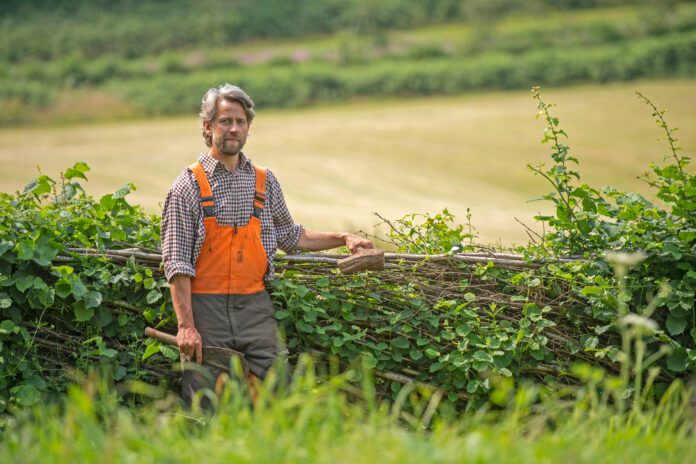
Wales’ Hedgerows face a bleak future without urgent action to support traditional craft skills, which are dying out, a Welsh rural environment partnership project is warning.
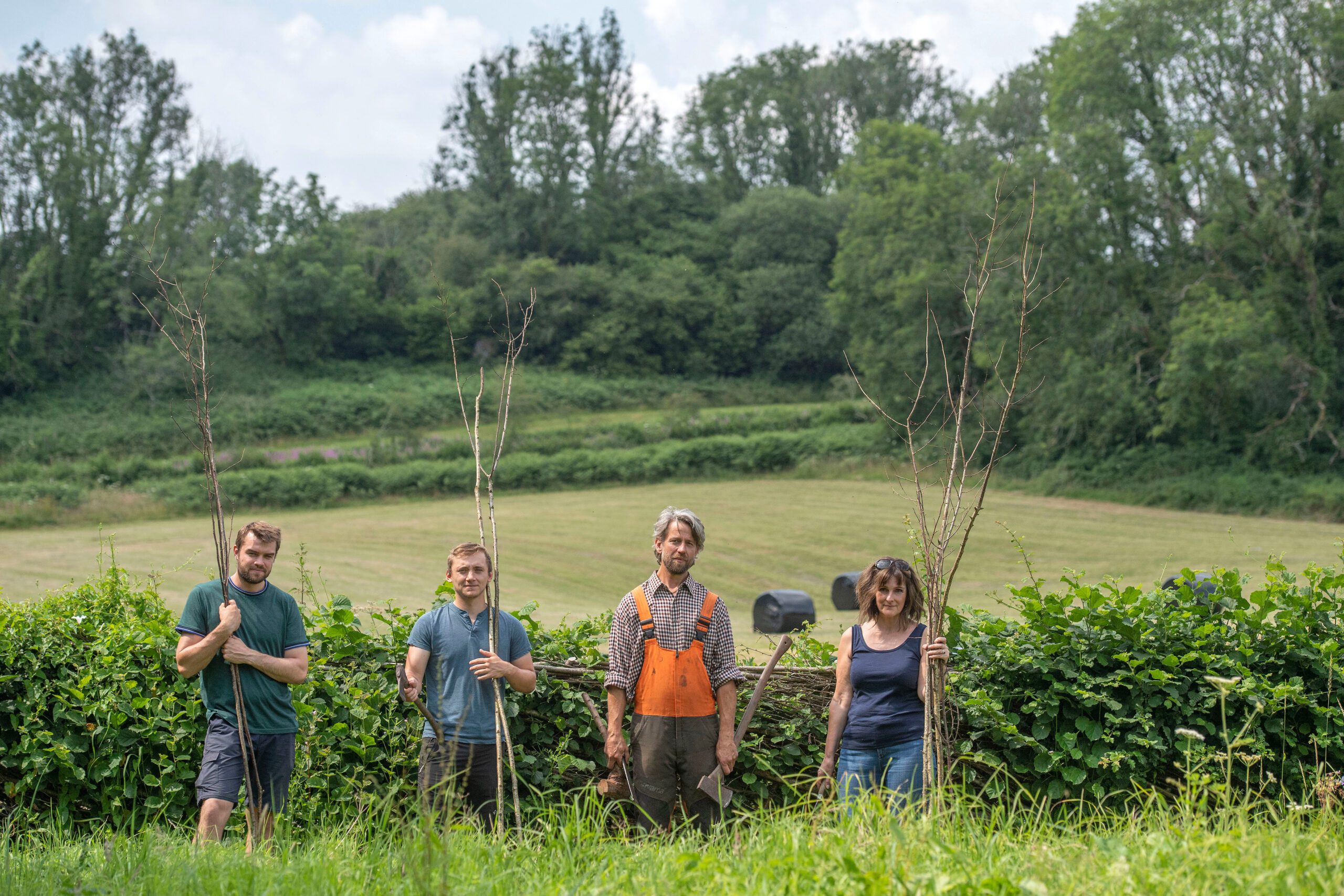
Pictured are Local Hedgelayer Malcolm Edwards (orange overalls), with Dyffryn Tywi hedgelaying apprentices Osian Owen (shorts) and Dan Bakewell plus Helen Whitear (Dyffryn Tywi Project Officer).
‘Dyffryn Tywi – Hanes Tirwedd Ein Bro’, based at the National Botanic Garden of Wales (the project’s lead partner), warns that failing to act now to support our hedgerows will damage their huge potential contribution to flood prevention, wildlife conservation and ultimately the battle against climate change.
Partners in the Project, which has launched a new website, www.dyffryntywi.org.uk include Natural Resources Wales, Cadw, Dyfed Archaeological Trust, The Bishop’s Park Abergwili, the Wildlife Trust of South and West Wales and the National Trust at Dinefwr.
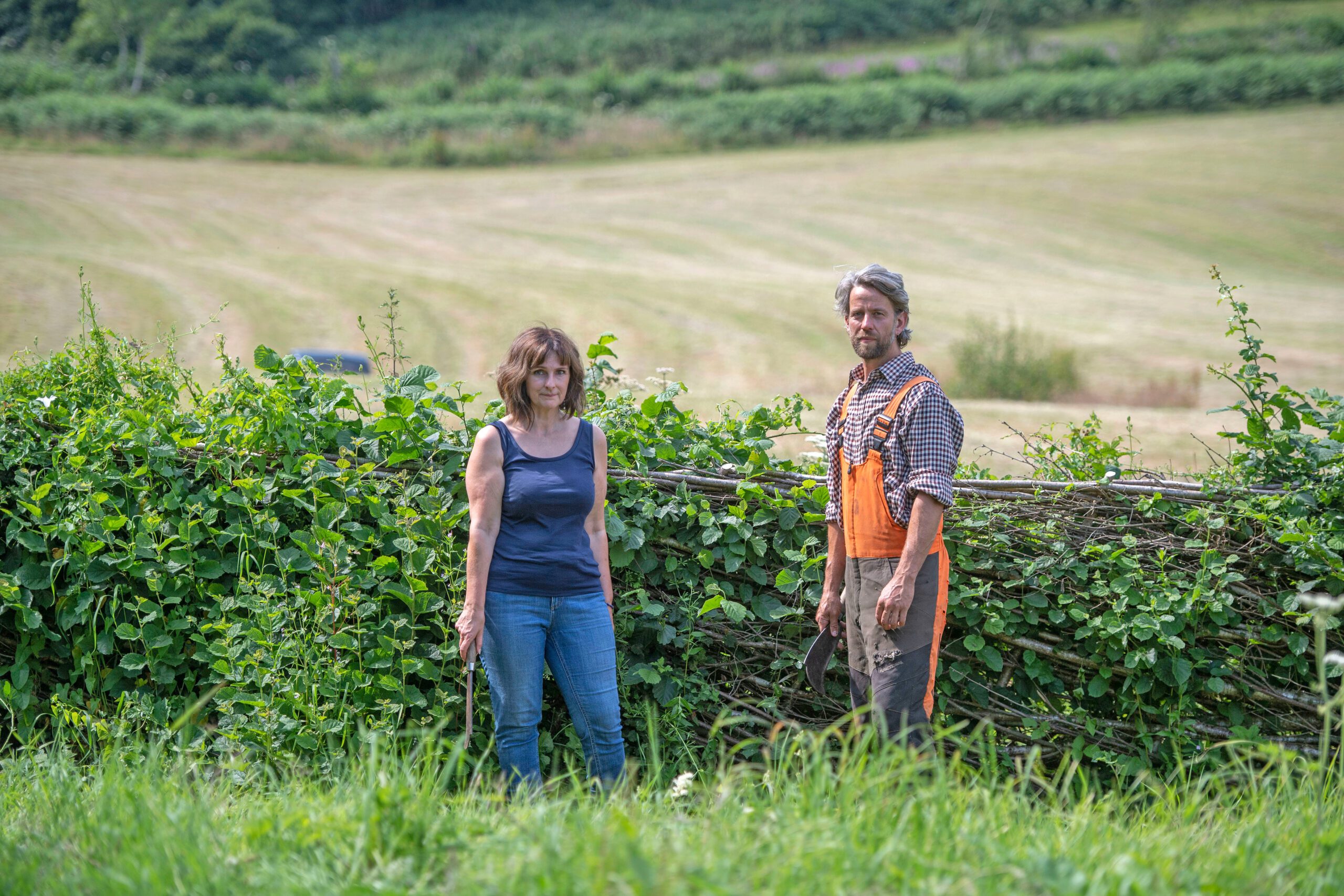
Pictured is local Hedgelayer Malcolm Edwards with Helen Whitear (Dyffryn Tywi Project Officer).
The project also encompasses a network of local landowners and stakeholders in the middle Tywi Valley, between Llandeilo and Carmarthen.
The Dyffryn Tywi Project points out that well-maintained, dense hedgerows are a vital part of Wales’ rural landscape and an important haven for wildlife.
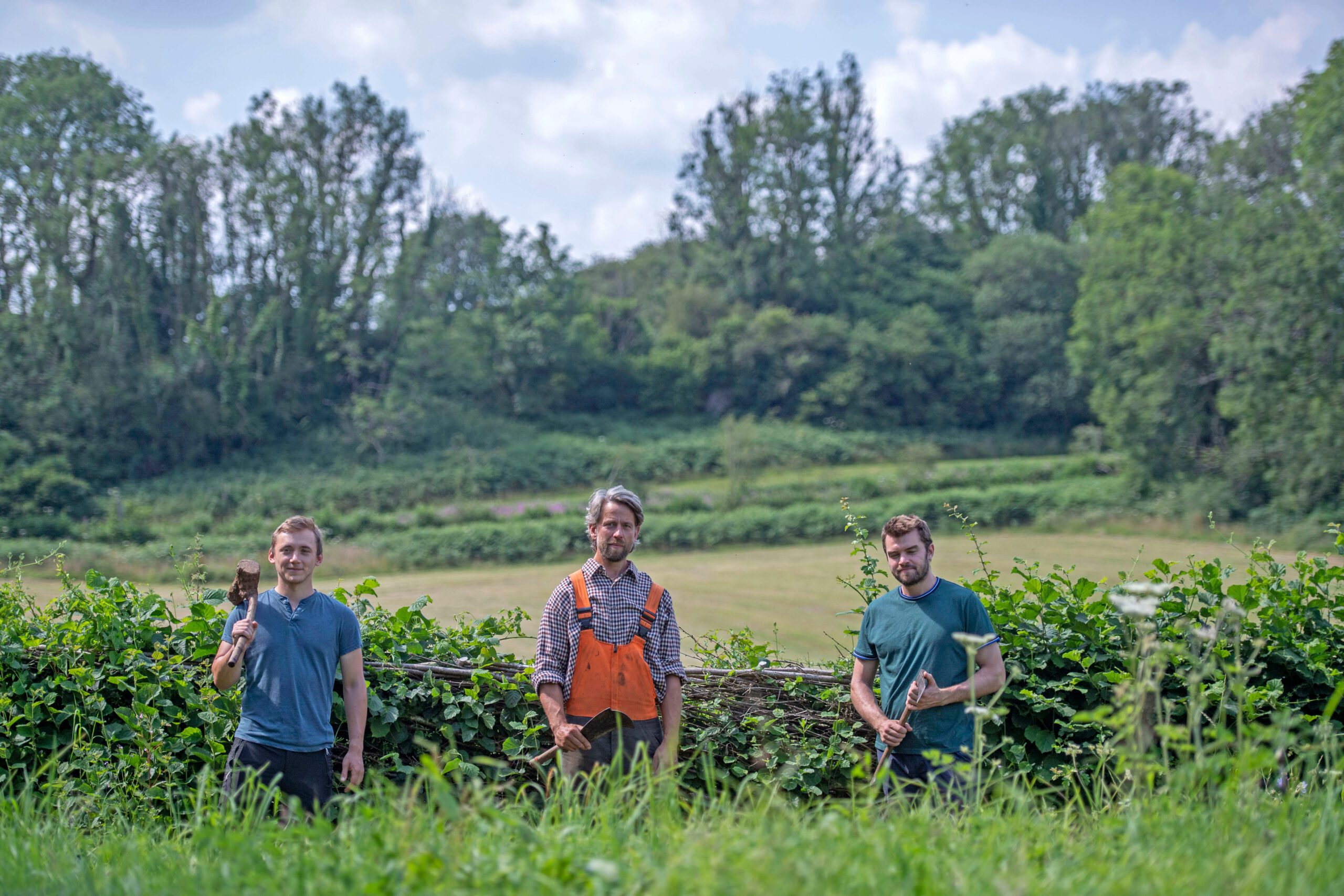
Pictured are Local Hedgelayer Malcolm Edwards (orange overalls), with Dyffryn Tywi hedgelaying apprentices Osian Owen (shorts) and Dan Bakewell.
It says hedgerows can also slow run-off and help defend against flooding, and that they can play a key role in carbon sequestration – removing the greenhouse gas carbon dioxide from the atmosphere, so helping to combat climate change.
But the Project says that the traditional skills needed to keep our hedgerows alive and thriving are in decline – many of the best local hedgelayers are now in their 80s and their skills are not being passed down. Proper hedgelaying is being superseded by mechanised hedgerow management – such as flailing which can do untold and sometimes irreparable damage to hedgerows.
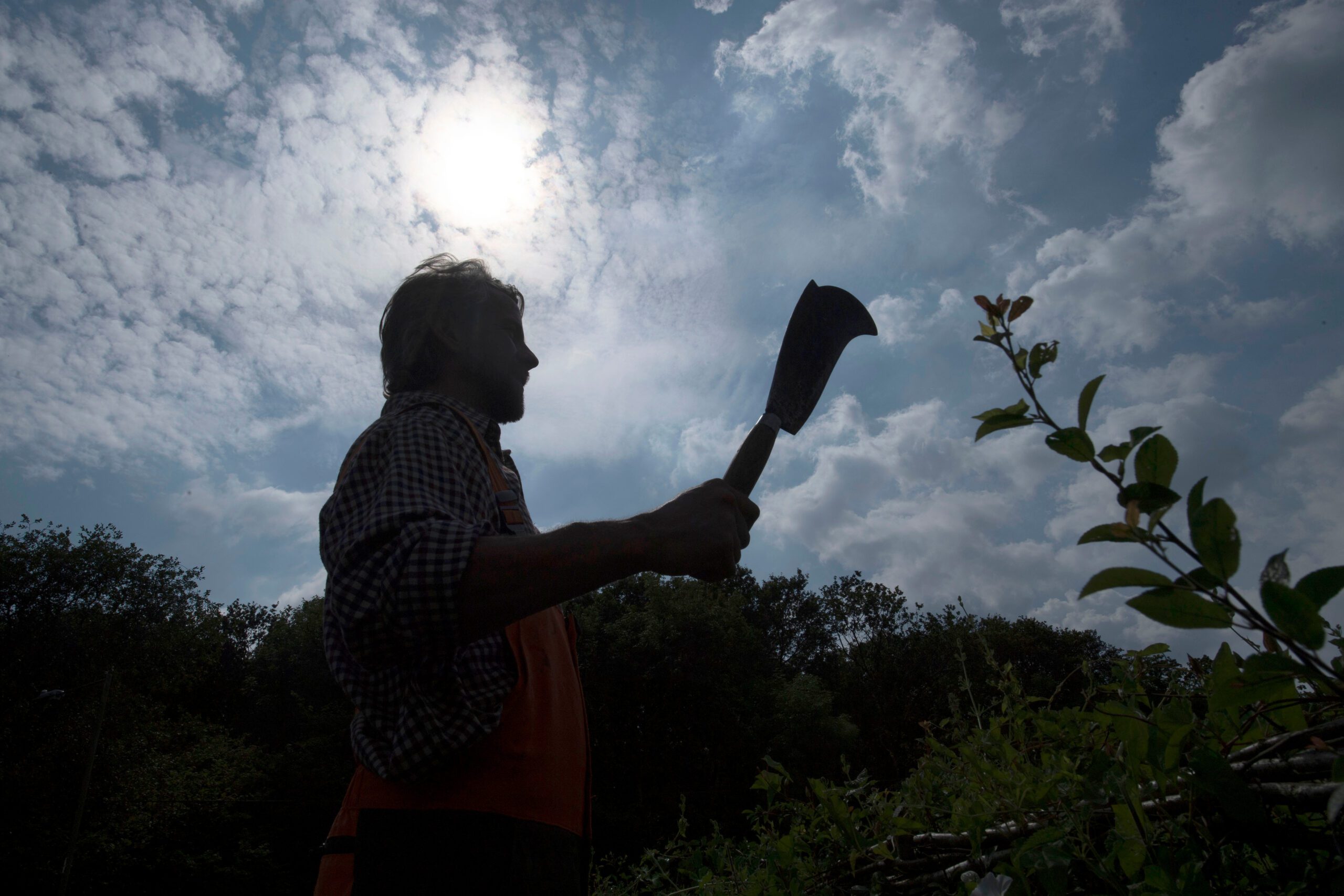
Pictured is local Hedgelayer Malcolm Edwards alongside one of his living fences.
Helen Whitear, lead for the Dyffryn Tywi Project said:
“Our hedgerows are a link between the past and the future, and a really good example of how fundamentally intertwined our natural and cultural environments are. It’s easy to take hedges for granted – people often assume that they’re just part of the ‘natural’ environment.
Hedges are vital for supporting wildlife, but the hedgerows of the Tywi Valley are also part of our cultural heritage – they’re full of history and local skill.
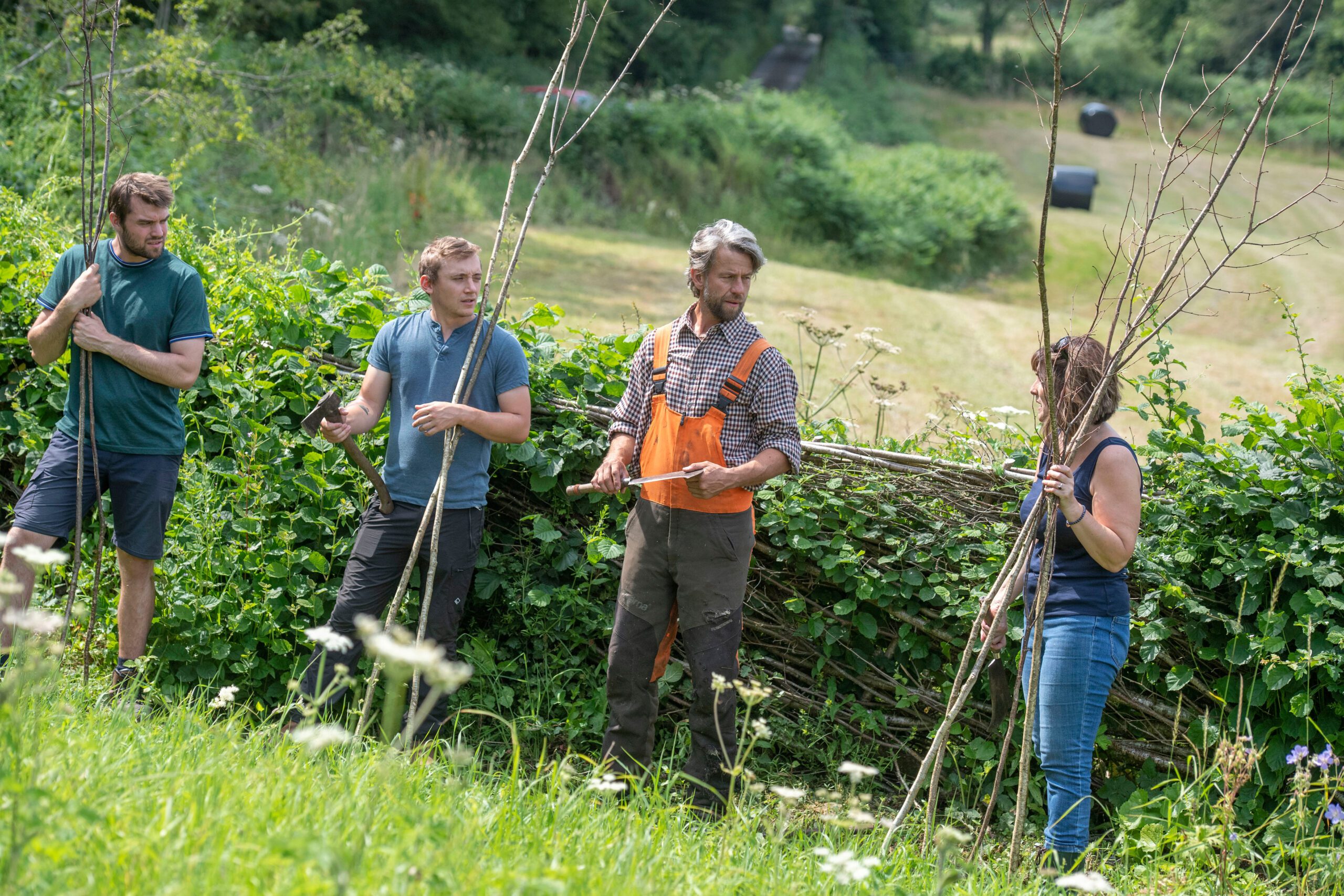
Pictured are Local Hedgelayer Malcolm Edwards (orange overalls), with Dyffryn Tywi hedgelaying apprentices Osian Owen (shorts) and Dan Bakewell plus Helen Whitear (Dyffryn Tywi Project Officer).
Before post and wire fencing, hedges had to be well-constructed and well-maintained, for managing stock. Maintaining them in a traditional way, to a local style is continuing knowledge and understanding that has developed and survived over hundreds if not thousands of years. It is about the identity of the local area in an age of globalisation. It is about doing our bit to help the environment in our own particular way.”
The process of hedge-laying is achieved by creating living hinges. ‘Pleach’ cutting through the stem forces the plant to pivot and cleave, forming a hinge. The stem is then layed horizontally, as low to the bank as possible. Additional layers protect the previous cuts and once built up, protect new growth from livestock, creating a dense, stock-proof barrier.
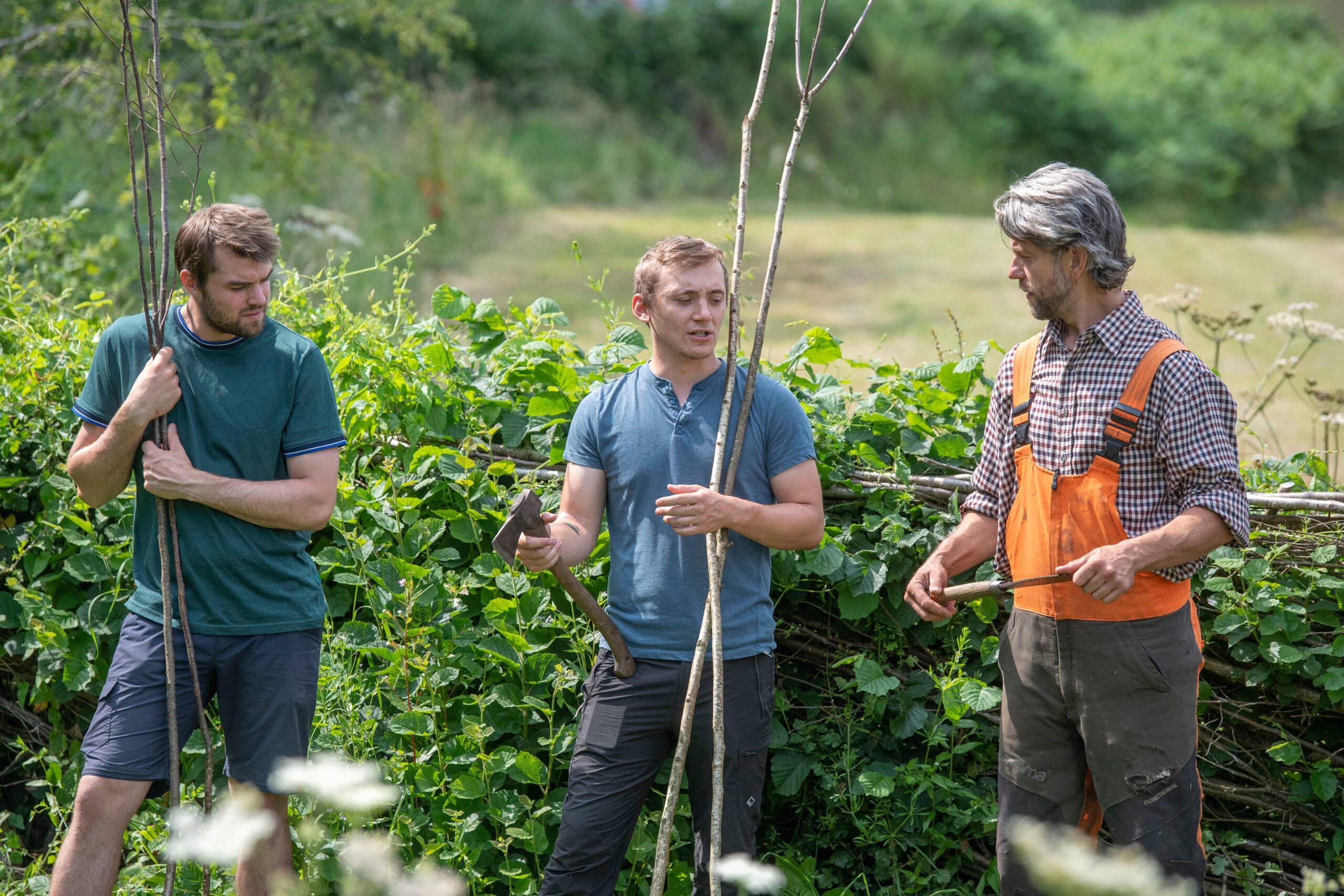
Pictured are Local Hedgelayer Malcolm Edwards (orange overalls), with Dyffryn Tywi hedgelaying apprentices Osian Owen (shorts) and Dan Bakewell.
Malcolm Edwards, from near Pentregwenlais, Llandybie, is a rural crafts practitioner who has been hedge-laying for over 25 years. He is currently working with the Dyffryn Tywi Project’s apprentices, passing on his hedgelaying skills to the next generation.
Malcolm said: “Hedges with a good living heart, stop erosion and slow down floodwater. Wales needs this practice to be at the forefront of good sustainable farm husbandry. A lot of the hedge-layers I know are now in their 80s and their knowledge and skills are disappearing fast.
My 20 plus years as a hedger are a small amount of time in the age of a farm or the years since the creation of a hedge-line to the present date. I have been lucky to learn from my elderly family, farmers I’ve worked with along the way and good mentoring.
I hope that showing how important our local hedges are, will inspire farming grandparents to take their grandchildren or their sons and daughters to the field boundaries. Show them the work your parents or grandparents did so they can learn what works on your farm. The craft is there in the old hedge lines and the knowledge might still be there if you ask the right people.”
Osian Owen, one of the Dyffryn Tywi Project’s Environmental and Conservation apprentices said: “I enjoy hedge laying as I find it both peaceful and stimulating, and the connection I feel to the land and past generations who would’ve done the same is special.
Trying to find the best positions to lay pleachers into each other is like an old-style game of Tetris. Hedge laying is important as it is a way of rejuvenating old hedges which promotes and creates habitat and food sources for all kinds of animals, through a method that is more environmentally friendly.
The link to the past is also important, learning methods which our forefathers would’ve used across the Tywi Valley and beyond, and keeping those traditions alive.”
On the new website, the Dyffryn Tywi Project states: ‘The Tywi Valley remains a working agricultural landscape, whose character has been defined by traditional farming and land management. The Dyffryn Tywi Project aims to encourage people – both locals and visitors alike – to appreciate and enjoy this landscape, through understanding what has made it special and unique.’
The full list of partners in the Dyffryn Tywi – Hanes Tirwedd Ein Bro Project comprises:
Cadw, Keep Wales Tidy, Tywi Centre, Carmarthenshire County Council, Campaign for the Protection of Rural Wales, Natural Resources Wales, Dyfed Archaeological Trust, Golden Grove Trust, Huw Jones Penpal Farm, Llais y Goedwig, National Botanic Garden of Wales, The Bishop’s Park, Welsh Historic Gardens Trust, National Trust Dinefwr, Wildlife Trust of South and West Wales.
This project has received funding through the Welsh Government Rural Communities – Rural Development Programme 2014-2020, which is funded by the European Agricultural Fund for Rural Development and the Welsh Government.
Help keep news FREE for our readers
Supporting your local community newspaper/online news outlet is crucial now more than ever. If you believe in independent journalism, then consider making a valuable contribution by making a one-time or monthly donation. We operate in rural areas where providing unbiased news can be challenging. Read More About Supporting The West Wales Chronicle
























